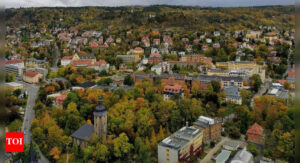LIFELINE OF NATION: INDIAN RAILWAYS

When thinking of travelling throughout the nation, Indian Railways comes to our mind first. The total route length spans 67,956 kms, connecting the entire country as an unit.
The Initial Phase :-
Indian Railways is one of the world’s largest railway systems that come under “single management system”. It has evolved from being a colonial enterprise into a state owned enterprise. The first passenger train in India started from Bori Bunder(Bombay) to Thane on 16 April 1853. In the Eastern side of the subcontinent, the first passenger train steamed from Hooghly on 15th August 1854.
These were few railway lines which in due course turned out to be a vast network of railways. Railways is the first choice of the vast majority of Indian population. Above train lines were established by Great Indian Peninsular Railways(GIPR) in alliance with East India Company.
The initial railway development was funded by private institutions. The British Parliament promised to return 5% profit on capital investment.
Although railways were introduced for importing and exporting purposes, they were used to supply amenities to areas struck by famine. During this phase, various developments like gas lamps, sanitation, etc.
Centralization :-
It was only during the early 1900s, that railways started to make profit. It was during 1900, when GIPR became the first state owned company, setting a precedent for further centralization. Since then the government bought all the major railway lines.
However, World War I took it’s toll on Indian Railways. Since they were used to meet the demands of British interests. Therefore, in 1924, Railway finance was separated from the general budget.
Electrification of trains started in 1925. From 1929, the train network started to grow exponentially, with the total of 66,000 kms. It started to transport 90 million pounds of goods annually.
Partition :-
The effects of World War II and India’s partition crippled the railway system. The wagons were used to transport military equipment to war zones. Due to the partition, the newly created railway system was separated and went to Pakistan. The Eastern and Bengal Railways also separated from the central railway system.
There was massive destruction caused by angered and violent groups. The tracks were destroyed, wagons burnt down, railway unions went on strike.
After the partition in 1951, the railway system were reorganized into zones. The management were made simpler and efficient. The fame of the Indian Railways were restored under extensive work were undertaken. The colonial-era locomotives were replaced by modern wagons. Earlier steam run engines were also replaced by electric engines.
New Phase :-
With the starting of luxury trains, Indian Railways saw a new prospective. The first luxury train was started by Government of Rajasthan and Tourism Department of India in 1982.
Metro system and technological advances reduced the transit time between stations. In 2000, the ticketing system was made online. The amenities were upgraded with Wi-Fi, designs, customer service , food and itinerary. This up gradation took Indian Railway to a new pinnacle of success.
Recently, private catering service, sliding doors, powerful engines were incorporated. This network of Indian Railways is only expanding and there’s always new goal to achieve.
Future of Indian Railways :-
Government of India plans to invest 120 billion dollars for the up gradation of 400 stations, electrification of the tracks, intensive customer care services to name a few. Off grid solar powered trains are set to hit the track by 2022. The initial stages of this experiment have given positive response. Electrification and solar powered train will save up the cost of imported fuel.
In recent years, privatization of enterprises have risen like no other. Talks have been going on about introducing privately owned trains. These will create employment and create less maintenance .
Few intersection facts about Indian Railways :-
- Today, at least 14,000 trains run on a daily basis across the country. The system employs more million people and more than that commute through railways.
- The world’s longest railway platform is 4,430 feet and is located in Gorakhpur, India.
- As of now, there are 17 railways zones and 69 divisions are divided among them.
- The diamond crossing in Nagpur, is a state-of-the-art kind where the trains can go to all 4 directions i.e., East, West , South and North.
- A railway bridge is being constructed over river Chenab. This bridge will connect the state of Jammu and Kashmir to the rest of the country.
Indian Railways has several subsidiaries. Some of them are directly related yo railways; while some are indirectly. Few of them include :-
- RailTel Corporation of India.
- Indian Railway Catering and Tourism Corporation.
- Indian Railway Finance Corporation.
In April 2022, Indian Railway celebrated it’s 165 years of glorious service. Although this system was created to benefit the interest of East India Company, Indian Railways has redefined the way population travels, commerce and trade.
Featured image source: Indian railway photo created by jeswin – www.freepik.com







